What causes vehicle vibration?
Tire and wheel imbalance is one of the most likely causes of vehicle vibration. Other causes can be related to drivetrain issues and / or bent components. Tire and wheel imbalance can result in a cupped tire wear pattern, traction loss and premature wear to suspension and steering parts.
The front tires produce more noticeable symptoms than the rear when out of balance due to the translation through the suspension and steering components and the feedback felt at the steering wheel. Vibrations from a rear imbalance may not be as obvious, but will still result in tire wear.
Tire imbalance results when the weight of a tire's materials is not distributed equally throughout the tire thus resulting in the tire being heavier on one side than the other. The imbalance can be caused by issues in manufacturing, or from tire wear. New tires will have minor imbalances that are correctable by adding a wheel weight to a specified location to counter the effect of the imbalance.
If excessive weight amounts are needed to balance the tire it may be an indication of a defective tire or that the tire may be incorrectly seated on the wheel rim.
It is possible to balance an out-of-round tire and wheel assembly and still have vibration due to wheel hop (also call wheel tramp). It should be noted that runout of less than 0.030" will not typically cause a noticeable vibration. However, runout of more than 0.125" is recommended for replacement of the tire or wheel. Although it is theoretically possible to balance a square tire and wheel, it does not mean that it will roll smoothly.
Clip-On weights are hammered in place and Tape-On weights use adhesive double-sided tape.
Correcting imbalances requires attaching wheel weights to the rim. Clip-on wheel weights are attached to the rim using a wheel weight hammer. There are several types of clip-on weights available in 1/4 ounce increments. Different types of clips are available to accommodate the variety of wheel types and wheel covers.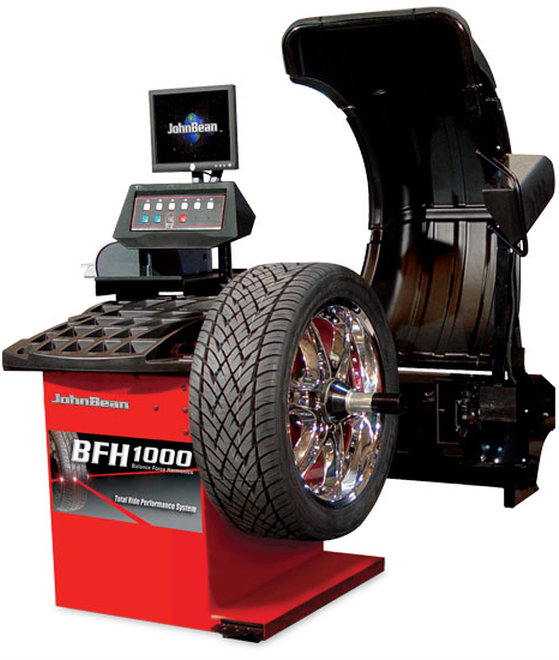 Aluminum wheels with a flange for a clip-on weight may require a coated or alloy clip so they will not corrode the wheel.
Aluminum wheels with a flange for a clip-on weight may require a coated or alloy clip so they will not corrode the wheel.
Different types of Clip-On weights fit a variety of applications.
Tape-on Wheel Weights
Tape-on weights may also be used for aluminum wheels. Tape-on weights are available in strips that can be cut to length to achieve the desired weight amount. These weights are attached by means of double-sided adhesive tape after cleaning the wheel area. Tape-on weights can be placed in a hidden placement on the inside of the wheel so they are not noticeable on the outside for the best appearance. Chrome weight strips are also available.
Aluminum, painted and alloy wheels can be easily scratched and it is worth noting to use plastic protectors to cover tire tools to prevent damage.
Tape-On Weights on Camaro Wheel (above)
The use of lead wheel weights began in the 1930's. Lead weights were banned by The European Commission in 2005 and they are now also banned in several of The United States. Alternative weights are made of steel or zinc or a zinc alloy called ZAMA, which combines zinc, aluminum and copper. Lead free tape-on weights are also available.
Alternative weights are made of steel or zinc or a zinc alloy called ZAMA, which combines zinc, aluminum and copper. Lead free tape-on weights are also available.
WHEEL BALANCING
There are two types of wheel balancing, static and dynamic. Static means an object is stationary. Therefore, before computer balancing, static balancing was performed with the wheel at rest. If a wheel with static imbalance was mounted on a spindle with the heavy spot on top, the heavy spot would rotate to the lowest possible position on its own. If the wheel was in balance statically, it would not have the tendency to rotate by itself.
Force is directed out away from center of wheel during rotation
Static imbalance subjects the wheel to vertical (up and down) impacts that become worse with higher speed. These impacts occur when a tire has a heavy spot on one end of its tread. A small amount of imbalance when a wheel is at rest can amount to a great deal of impact force when the wheel is spinning at highway speeds.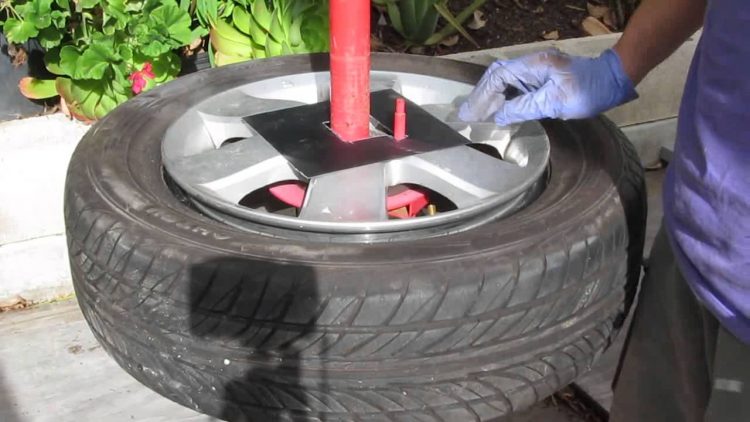 For instance, if a 15" wheel is 1 ounce out of balance at rest, at 60 mph the impact force will be 4.6 pounds.
For instance, if a 15" wheel is 1 ounce out of balance at rest, at 60 mph the impact force will be 4.6 pounds.
Static imbalance causes tire wear that creates a gouging effect which results in a cupping or scalloped pattern on the tire tread. Mechanical parts are also worn prematurely by these vibrations. Extreme cases can result in a hopping tire that can actually leave the road, especially when coupled with a bad shock absorber (known as wheel or tire hop, also wheel tramp).
Cupped Tire Wear (above)
The part of the tire in contact with the road is actually traveling at 0 mph. This is called static friction. During wheel tramp when the tire returns to the road, a small amount of its rubber is scrubbed off. This is because the tire was traveling at the same speed as the vehicle when it left the road. This scrubbing happens all around the tire, accounting for the cupped wear around the entire circumference of the tread surface.
In the past, narrow bias ply tires were static balanced on a bubble balancer. Today's modern computer wheel balancers are capable of measuring the static imbalance of a spinning tire and wheel, the name remains from when the imbalance was measured with the wheel at rest on a bubble balancer. Static balancing, also called single-plane balancing, is done in a single plane where compensating weight is added on the opposite side of the wheel. Modern wheel Balancers are able to determine the amount of weight imbalance and the location of the weight placement exactly opposite of the heavy spot on the tire. Static balancing is one option among several balancing modes on today's computer wheel Balancers. Although there are better modes of balancing aluminum wheels, this option might be used when choosing to hide the wheel weights on the inside of the wheel. When static balancing an aluminum wheel, it is popular to use tape-on weights to the inside of the wheel at the center plane.
Dynamic balance means balance in motion. It is also called two-plane balance because it measures side to side (lateral) force as well as up and down (axial or radial) force. Lateral forces are noticeable when a steering wheel moves back and forth. A computer wheel balancer spins the wheel and determines the locations and amounts of vibration. The computer splits the tire into two halves and measures both lateral and radial forces on each side of the tire's center. Weights are added to each side of the wheel to correct the imbalance. Therefore, a tire that is dynamically balanced is also statically balanced. Dynamic balancing can be performed with a computer wheel balancer or with an on-the-car spin balancer.
DYNAMIC IMBALANCE
When a tire has more weight on the inside or outside of its tread, it has a dynamic imbalance. Dynamic imbalance is only noticeable when the tire and wheel is spinning. The tire will have a tendency to shimmy from side to side (left and right) which also results in faster tire wear.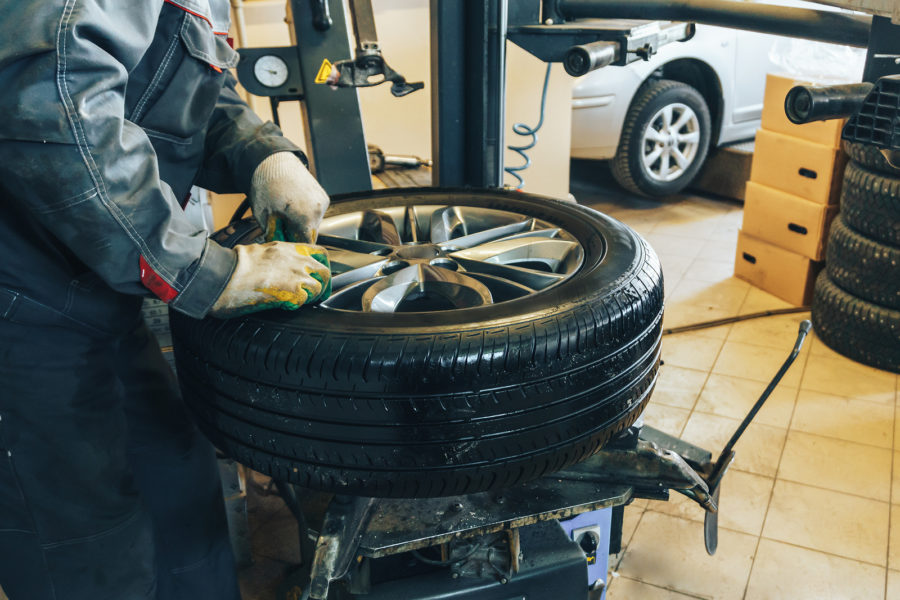 When the tire is spinning the heavy spot will tend to seek the centerline of the tire. This is why the tire shimmies from side to side. When the heavy spot is in front, it pushes the wheel to one side. After the tire rotates one half revolution, the heavy spot causes the wheel to try to turn in the opposite direction. However, most tires have imbalances on both sides of the tire, requiring counterbalancing weights to be placed on both sides of the wheel.
When the tire is spinning the heavy spot will tend to seek the centerline of the tire. This is why the tire shimmies from side to side. When the heavy spot is in front, it pushes the wheel to one side. After the tire rotates one half revolution, the heavy spot causes the wheel to try to turn in the opposite direction. However, most tires have imbalances on both sides of the tire, requiring counterbalancing weights to be placed on both sides of the wheel.
Action Of Dynamic Imbalance
A wheel might be in static balance but not dynamically balanced. If a tire has been statically balanced by putting all of the counter weight on one side of the wheel, that weight creates a dynamic imbalance once the wheel is spinning causing a side to side shimmy. The correct way to balance a wheel statically is to split the weight amount in half and place equal weight amounts on both sides of the wheel. Some tire manufacturers recommend this procedure when the amount of weight exceeds 20 grams or .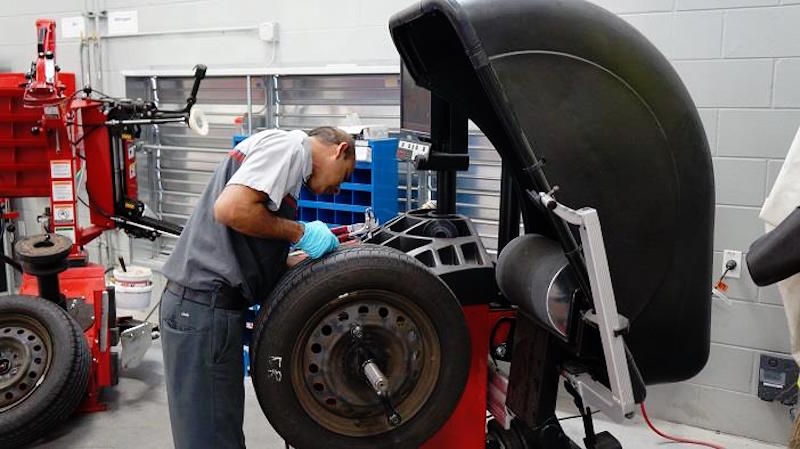 71 ounce. It is unlikely for a tire to have a static imbalance and not have a dynamic imbalance as well. When a wheel and tire have been dynamically balanced, both types of imbalances can be eliminated.
71 ounce. It is unlikely for a tire to have a static imbalance and not have a dynamic imbalance as well. When a wheel and tire have been dynamically balanced, both types of imbalances can be eliminated.
Computer wheel Balancers are popular, accurate and easy to use for balancing tires in both the static and dynamic modes. Computer balancing is usually performed after a tire repair or when a new tire has been installed on a wheel. The wheel is mounted to a horizontal threaded shaft using adapters that are supplied with the machine.
Weaver Computer Wheel Balancer Model W-977 (above)
Another cause of imbalance can be caused by a wheel that was improperly mounted on the wheel balancer. According to FMC Corporation, a 36 pound tire and wheel assembly that is off center by only .006" will result in a 1/2 ounce imbalance error. The effect of this type of imbalance can be demonstrated by first balancing a tire and wheel assembly on the balancer, then loosen the wheel enough to place a standard business card between the flange plate on the balancer and the wheel.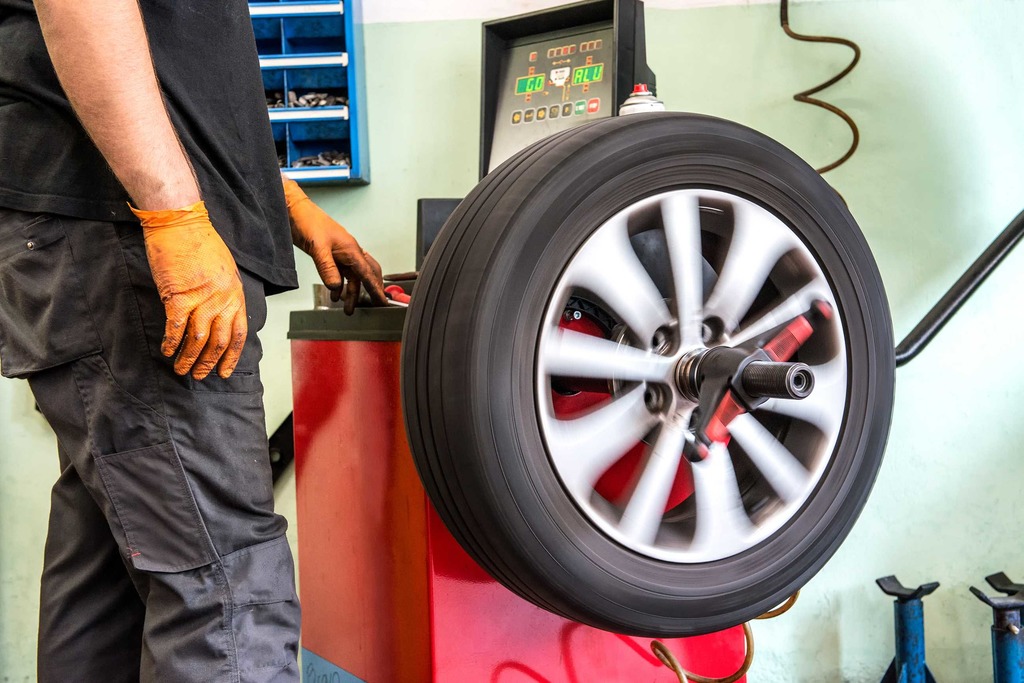 Tighten and respin the assembly with the card in place and notice the difference in the weight readings measured by the balancer. The best method for mounting a wheel on the balancer is the method specified by the manufacturer. The method will duplicate the method by which the wheel is centered on the vehicle.
Tighten and respin the assembly with the card in place and notice the difference in the weight readings measured by the balancer. The best method for mounting a wheel on the balancer is the method specified by the manufacturer. The method will duplicate the method by which the wheel is centered on the vehicle.
There are two ways that wheels are centered on a vehicle:
Hub-centric mounting is when the hole at the center of the wheel locates the wheel on the wheel hub or axle.
Lug-centric mounting is when the lug nuts center the wheel.
To determine whether or not a wheel is hub-centric, see if the wheel fits the hub snugly with the lug nuts removed. If you can move the wheel up and down or side to side, then the wheel is lug-centric. When a wheel is lug-centric is uses the taper on the lug nuts to center the wheel.
Always make sure that the adapters and the wheel are clean and undamaged. Remove any rocks or debris from the tire and wheel before balancing.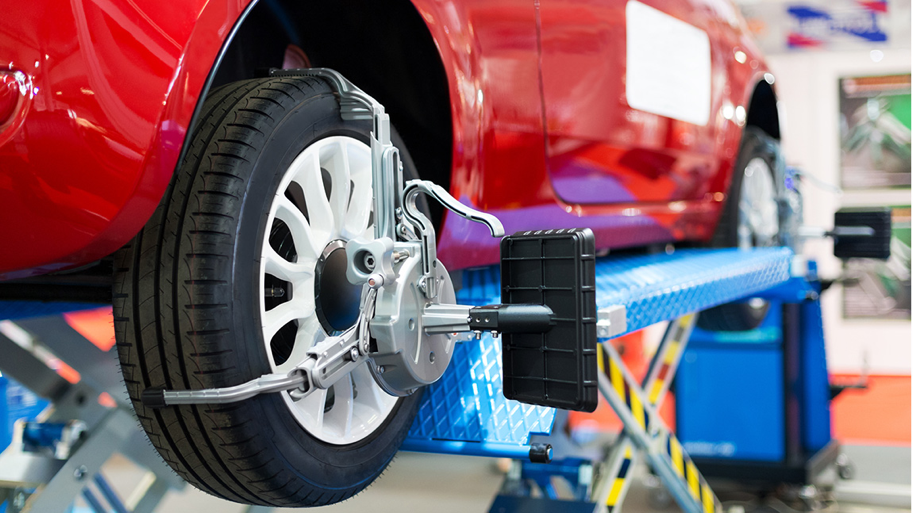 Use a centering cone to mount a hub-centric wheel. On stamped steel wheels, install the cone from the back or inside of the wheel. This is because the wheel was originally stamped from the back or inside of the wheel. The recommended arrangement of adapters installed on the shaft is:
Use a centering cone to mount a hub-centric wheel. On stamped steel wheels, install the cone from the back or inside of the wheel. This is because the wheel was originally stamped from the back or inside of the wheel. The recommended arrangement of adapters installed on the shaft is:
1st- The spring (some modern balancers have a built-in spring).
2nd- The cone that fits the wheel hub.
3rd- The tire & wheel assembly.
4th- The retainer cup or drum (a protective ring is typically used on the cup to protect the wheel finish).
5th- The wing nut (most modern balancers use a quick nut that can bypass the shaft threads for faster tightening).
Hub-Centric Mounting
As the wheel is tightened on the shaft, the spring will keep pressure on the cone to center properly. It is common to spin the tire in the opposite direction (counter clockwise as viewed from the shaft end) to help promote the best centering. The retainer cup allows an area for the small end of the cone to protrude through the wheel hub while providing a means for the wing nut to tighten the assembly on the shaft. The wing nut should be hand tightened only. It is an accepted practice to rock the weight of the assembly counter clockwise with both hands on the wing nut then tighten in a clockwise direction. A snug fit is all that is required to prevent the assembly from spinning or slipping on the shaft during the spin cycles. The condition of the cones is critical to accurate balancing. A new cone has a tolerance of .001” clearance on the shaft. Worn or loose fitting cones and shafts should be replaced for best results. There are expandable split collets available for a more accurate centering. These collets expand when tightened, eliminating all clearance between the collet and the shaft.
The wing nut should be hand tightened only. It is an accepted practice to rock the weight of the assembly counter clockwise with both hands on the wing nut then tighten in a clockwise direction. A snug fit is all that is required to prevent the assembly from spinning or slipping on the shaft during the spin cycles. The condition of the cones is critical to accurate balancing. A new cone has a tolerance of .001” clearance on the shaft. Worn or loose fitting cones and shafts should be replaced for best results. There are expandable split collets available for a more accurate centering. These collets expand when tightened, eliminating all clearance between the collet and the shaft.
To mount lug-centric wheels, use a lug-centering adapter plate. Universal adapter plates have several lug stud swing arms that are attached in different places depending on the number of lug holes in the wheel. There are only five adapter arms.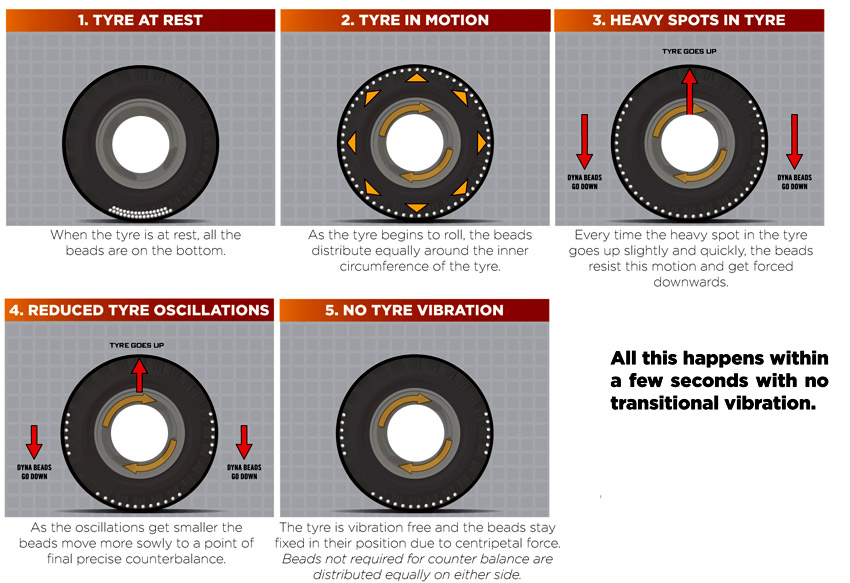 With six lug wheels, use three arms. With eight lug wheels, use 4 arms. After the arms are installed and tightened on the adapter, the adapter is held against the mounting flange on the wheel balancer by installing screws. Special lug nuts hold the wheel against the adapter plate. Do not overtighten them.
With six lug wheels, use three arms. With eight lug wheels, use 4 arms. After the arms are installed and tightened on the adapter, the adapter is held against the mounting flange on the wheel balancer by installing screws. Special lug nuts hold the wheel against the adapter plate. Do not overtighten them.
Universal Lug-Centric Adapter W-B-W-1000000 (above)
Lug-Centric Mounting (above)
Case History - A man purchased a used Suburban that had aftermarket aluminum wheels and oversized tires. The tires appeared to be in good condition, with less than half of the tread worn. Unfortunately, they had been balanced incorrectly using adapters in the center hub hole instead of a lug-centric adapter. The tires had worn unevenly and developed a cupped tread wear pattern. They were now too far out of balance and had to be replaced.
After the wheel is mounted on the balancer, there are three parameters that are programmed into the balancer:
1) The Width (Bre on some balancers) of the rim, measured by a rim width caliper.
2) The Distance the rim is from the backing plate flange, measured by sliding the distance scale out to the rim edge or bead edge.
3) The Diameter of the wheel (example, 15”, 16”, 16.5”).
The wheel is spun for a short few seconds and then stops. The balancer will then show the results by displaying the readout on the screen. The readout shows the weight amounts and the locations for them to be installed on the wheel. After the weights have been installed, the balancer is spun again to check for the accuracy of the balance job. A reading of “zero” or OK on both sides of the wheel means the wheel is balanced and ready to be installed back on the vehicle.
Balancer Display showing weights amount, weight location, and dynamic balance mode. Also showing the distance, width and diameter settings of the wheel (Model shown Weaver W-977). (above)
For cosmetic and appearance purposes, tape-on weights are often used in various modes available on the balancer.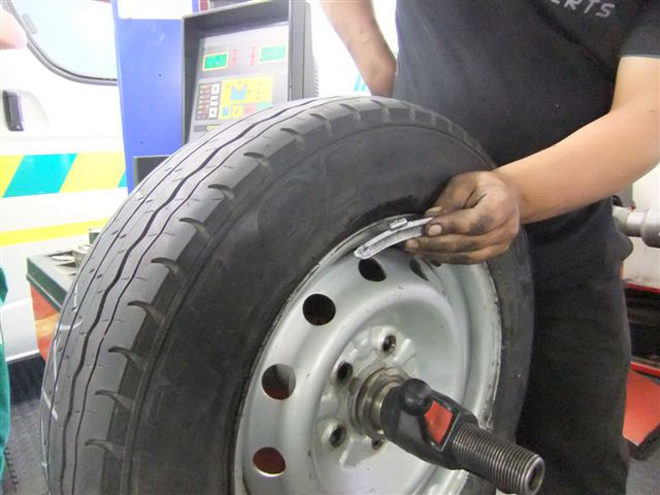 These modes (ALU modes on some machines) allow for a variety of weight placements and hidden weight methods to allow for the best appearance while maintaining the quality of a dynamic balance. Calculations are made by the balancer’s computer to provide the correct weight amount and location accordingly.
These modes (ALU modes on some machines) allow for a variety of weight placements and hidden weight methods to allow for the best appearance while maintaining the quality of a dynamic balance. Calculations are made by the balancer’s computer to provide the correct weight amount and location accordingly.
Tape-On Weights Applied to Inside of Wheel (above)
When balancing aluminum wheels with tape-on weights, use duct tape to temporarily attach the weights to the wheel during the initial balance. Install the outside weight as near to the outside as possible. The inside weight is placed on the inside edge of the wheel. Always be certain that there is enough clearance between the wheel weights and the brake caliper.
REPEATABILITY - VERY IMPORTANT!
The quest for a REPEATABLE balancer is obtainable if you can duplicate the mount. There are 2 conditions to test that will help you understand (it does not matter which brand of machine you are using). The accuracy of a Weaver®Wheel Balancer is 1 gram or .10 ounce.
The accuracy of a Weaver®Wheel Balancer is 1 gram or .10 ounce.
1) Testing the balancer - This is easy to do. By watching our calibration video you will see the balancer tested at the end of calibration by using a test weight to check the balancers accuracy. This tells us if the balancer is reading accurately or if it has an issue. When the balancer is calibrated and reading accurately, a test weight will define the ability of the balancer to read the correct weight amount and location. It is the same method to check any brand of balancer.
2) Testing the physical mounting apparatus (this can be the cone, collets, mounting plates etc) - Once you have completed the accuracy test after calibration and the balancer is reading correct, anything you change with regards to the mounting (physically) will affect the readings from the previous mount. We have already confirmed the balancer is reading accurately so if you loosen and rotate the wheel the only change being made is physical.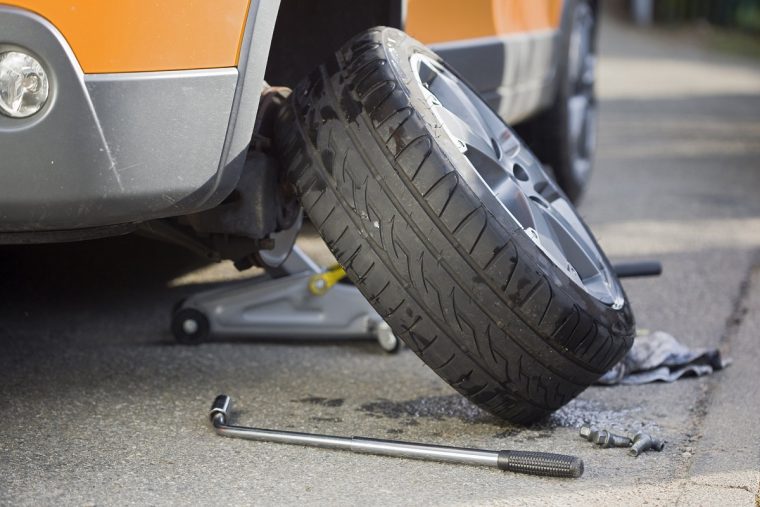 When using cones you will realize that there is a tolerance of about 2-3 thousands of an inch to allow the cone to slide over the shaft threads (this gets worse over time as the threads wear). Combine that with the tolerance in the particular wheel hub and it is a guarantee that it will change the mounting position of the wheel if rotated or remounted thus changing the balance (wheel balancers are very accurate and will sense this minimal change). If it repeats, you are simply lucky to hit near the same mounting position. The more accurate the mounting device you use, say a Universal Lug Adapter or Low Taper Collet Set (both are available in our category “Wheel Balancer Parts and Accessories) specific to the make of the wheel, then you can begin to look for better Repeatability (on any machine) because you have a greater ability to reproduce the same mounted physical position. This physical change has nothing to do with the balancer’s capability and has everything to do with your ability to reproduce the same mounted position.
When using cones you will realize that there is a tolerance of about 2-3 thousands of an inch to allow the cone to slide over the shaft threads (this gets worse over time as the threads wear). Combine that with the tolerance in the particular wheel hub and it is a guarantee that it will change the mounting position of the wheel if rotated or remounted thus changing the balance (wheel balancers are very accurate and will sense this minimal change). If it repeats, you are simply lucky to hit near the same mounting position. The more accurate the mounting device you use, say a Universal Lug Adapter or Low Taper Collet Set (both are available in our category “Wheel Balancer Parts and Accessories) specific to the make of the wheel, then you can begin to look for better Repeatability (on any machine) because you have a greater ability to reproduce the same mounted physical position. This physical change has nothing to do with the balancer’s capability and has everything to do with your ability to reproduce the same mounted position.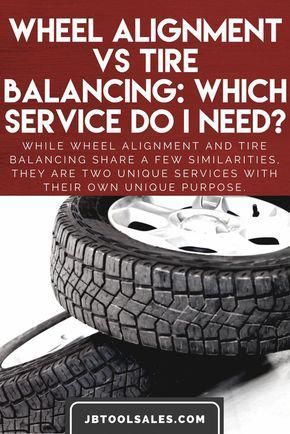
When mounting, the goal is to reproduce the same way it is mounted on the vehicle. A perfectly balanced tire and wheel assembly can be mounted back on the vehicle incorrectly and produce an imbalance. Mounting is the most critical component to a good balance result on the road. To demonstrate the change that can result from mounting changes, simply balance a wheel on the machine, only loosen the assembly (without rotating and do not remove the wheel) and place a typical business card (an uncoated business card is about .013") between the backing plate and the wheel. Tighten and respin to see the change in weight amount produced by the card alone. It is profound!
If your only concern is repeatability, you will need to invest in a Universal Lug Adapter, Low Taper Collet Set or mounting plate sets made by Haweka to raise the accuracy of mounting. Remember, even with this much accuracy it is vital that the assembly be mounted correctly on the vehicle for the best result. Mounting Matters!
The yoga studio isn't the only place where you'll hear the words "balancing" and "alignment.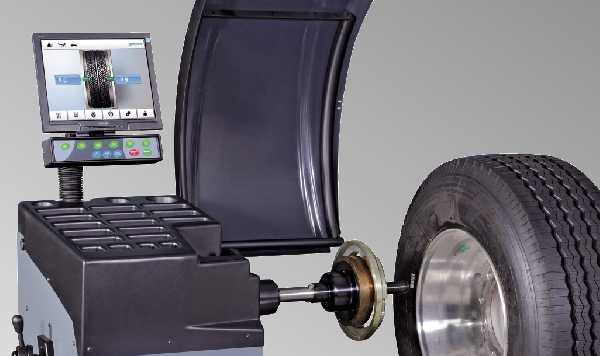 " You'll also hear these words mentioned when you take your car in for service.
" You'll also hear these words mentioned when you take your car in for service.
But what do balancing and alignment mean off the yoga mat? Both contribute to a smoother ride, but tire balancing and alignment are different services. A tire balance corrects the weight imbalance on your tire and wheel assemblies, while an alignment corrects the angles of the tires so that they come into contact with the road in just the right way.
If you’re wondering, “What is wheel alignment?” or, “What does tire balancing mean?” it’s time to dive deeper into your car care practice. Learn the difference between the two today.
Tire balancing (also known as wheel balancing) corrects uneven distribution of weight
in the wheels. Imbalanced wheels can lead to vibration, excessive tire wear, damage tothe suspension, and other problems.
During a tire balance service, your tires and wheels are mounted onto a tire balancing machine. The machine spins the tire and wheel assembly to measure the imbalance, so that a technician can precisely install the correct tire weights to achieve a properly balanced wheel and tire assembly. Often, wheel balancing and alignment happen during one service, but they shouldn't be confused for the same thing!
Often, wheel balancing and alignment happen during one service, but they shouldn't be confused for the same thing!
Uneven tire wear and vibration in your steering wheel, floorboard, or seat can signal it's time for tire balancing. You may also want to have your tires balanced during a tire rotation, after a flat tire repair, or as part of your scheduled maintenance.
Interestingly, the part of your car that trembles can indicate whether the front or back wheels need balancing. If it's in the steering wheel, it’s likely your front tires. If it's in the seats, the imbalance is in the back wheels.
Tires can become out of balance because of uneven tire wear or the loss of a wheel weight because a rim hits a curb or pothole. If you leave your car parked for extended periods without moving it, the tires might develop flat spots that cause imbalances.
Wheel alignment (also known as tire alignment) refers to an adjustment of a car's suspension — the system that connects a vehicle to its wheels.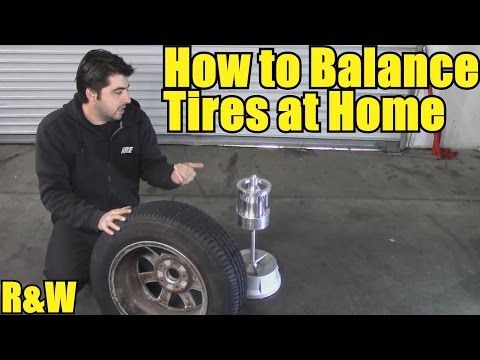 It's not an adjustment of the tires or wheels themselves.
It's not an adjustment of the tires or wheels themselves.
Alignment keeps your car from veering to the right or left. It also can improve the handling of your vehicle and stop unusual on-the-road vibrations.
Your vehicle might need an alignment if you notice any of the following:
Your alignment can get knocked out of whack after being in a car accident, driving over a pothole, or running into a curb.
The most significant benefit of balancing services is that they prevent premature tire tread wear. Technicians agree that getting your tires balanced every 5,000 to 6,000 miles (or as recommended by your manufacturer) can help extend their lifespan and improve their performance.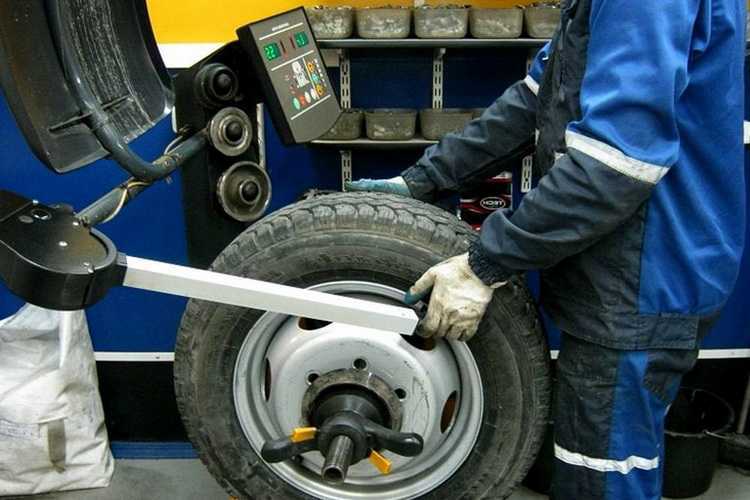
Wheel alignment benefits, on the other hand, include improved vehicle handling, fuel efficiency, and tire life. Firestone Complete Auto Care recommends that you have your vehicle's alignment checked every 6,000 miles or twice a year. Left untreated, alignment issues can shorten a tire's life by thousands of miles, and they can damage critical steering and suspension components.
| Tire Balance vs. Alignment Quicklook | |||
|---|---|---|---|
| Service | Definition | Signs It's Time | Benefits |
| Tire Balance | A tire balance corrects the weight imbalance on your tire and wheel assemblies. | Uneven tire wear and vibration in your steering wheel, floorboard, or seat. | Proper balancing can lead to a smoother ride, less tire wear, and reduced strain on the drivetrain. |
| Wheel Alignment | An alignment corrects the angles of the tires so that they come into contact with the road in just the right way.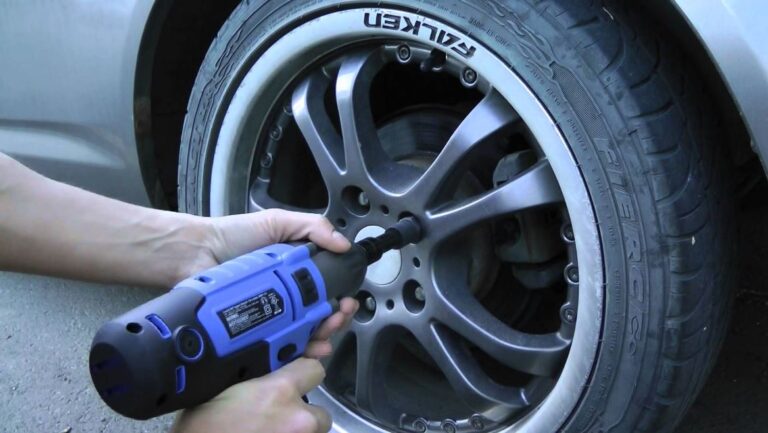 | Vehicle pulls to one side, rapid tire wear, squealing tires, or crooked steering wheel when driving straight. | Proper alignment ensures a smoother ride for you and a longer life for your tires. |
Are you noticing symptoms of balancing and alignment issues in your car? Don't let them disrupt your flow. Schedule an appointment at your nearest Firestone Complete Auto Care for a zen-like ride that’s both relaxing and reliable.
Author: Kirill Savchenko
The modern car owner does not particularly go into the wheel balancing process.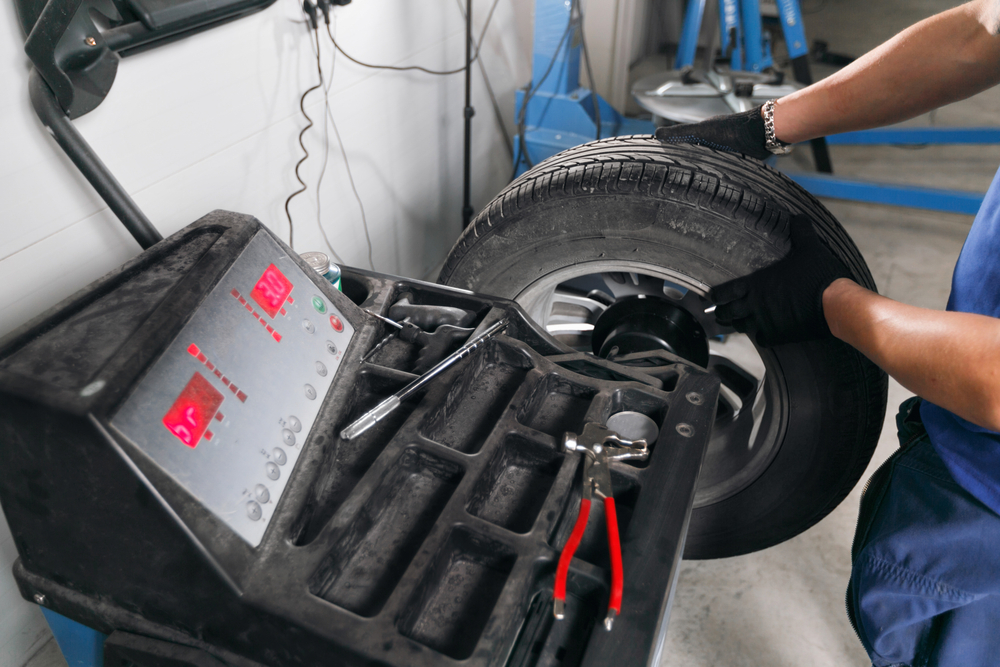 He perceives it as a kind of obligatory procedure for seasonal change of shoes and does not even realize how important its quality is.
He perceives it as a kind of obligatory procedure for seasonal change of shoes and does not even realize how important its quality is.
In fact, the effects of the imbalance of a rotating body can be seen at home. Try tossing your sneakers into the washing machine and spinning it. The imbalance that appears in the drum will cause it to beat, and with an increase in speed, the washing machine will rumble and shake. Something similar happens with a car whose wheels are out of balance.
Suspension and wheel bearings, steering elements, even with an imbalance of 10-15 g, receive thousands of beats per minute with an amplitude of 0.1-0.3 mm. They may be imperceptible to the driver, but act like a concrete hammer. Inexorably destructive. In addition, the imbalance increases tire wear and makes it uneven.
Considering that the imbalance on each wheel is different, the car becomes less stable when driving at high speeds. It is harder to manage, and on a slippery or wet road, the situation can completely get out of control.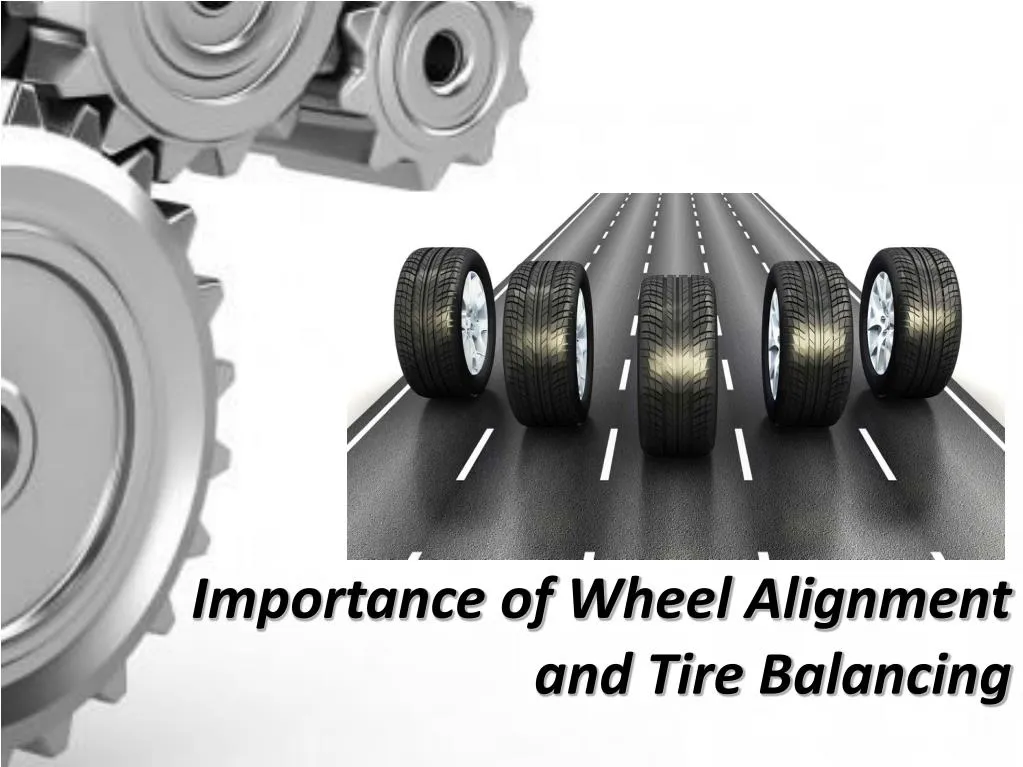
So, imbalance appears when the center of mass of the wheel does not coincide with the axis of rotation. It would seem that this cannot happen on absolutely new tires or disks, because they are made in compliance with all technological requirements.
Yes, it is, but in any case, the tire does not come out perfect during the manufacturing process. Some of it may be a little thicker and heavier, some thinner and lighter. We are talking about millimeters and grams, which simply cannot be determined. After mounting on a disk, which is also not ideal due to the same technological reasons, a single structure is obtained that has a common center of mass. That is why the wheel is balanced as an assembly.
If it were a conditional thin disk, then the balancing would be only static. In this case, it is enough to balance the opposite centers of mass: the minimum and maximum. But a car wheel is wide, and therefore it needs dynamic balancing, on the outside and on the inside.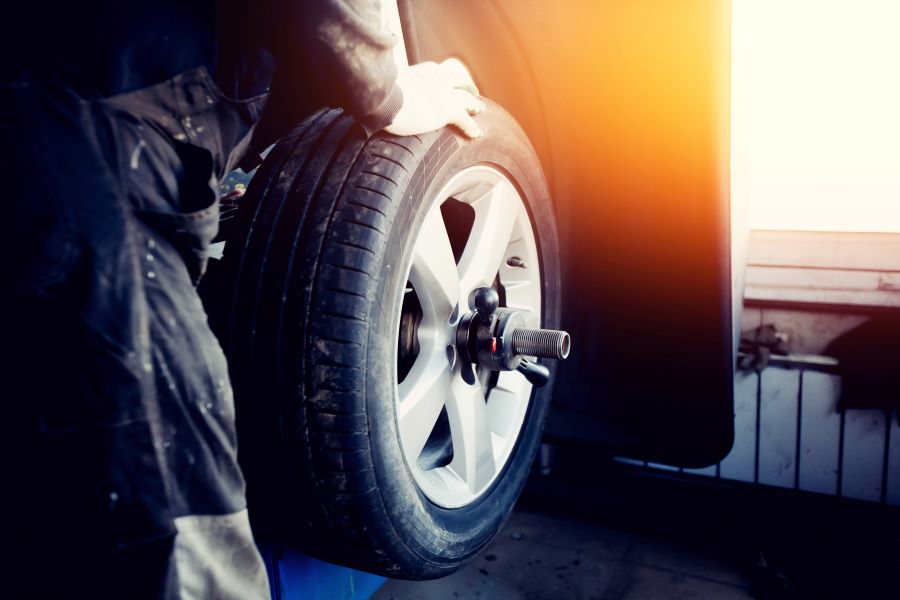
This is done with the help of special lead or zinc balancing weights weighing 5-60 g. On stamped disks they are fastened with steel clips-latches, on light-alloy ones - with self-adhesive strips. It is impossible to correct the imbalance on your own. For this, special balancing machines are used.
They vary in design, from the simplest to those equipped with laser sensors. The latter allow you to determine not only the imbalance, but also the curvature of the disk or the violation of its geometry. In this case, the owner will be offered to repair the disc or may be denied balancing due to its impossibility.
But even the presence of such a machine in the tire shop will not give any guarantee that the wheels of your car will be balanced correctly. Firstly, the machine must be fixed on a solid, better concrete base and stand strictly horizontally.
Secondly, the correct data on the size of the tire and disk must be entered into its electronic unit, and the machine itself must not have wear in the rotating elements and be calibrated.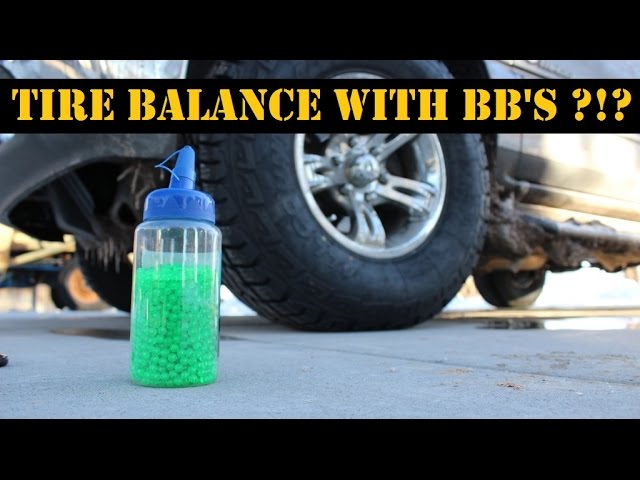 Finally, the master must have the appropriate qualifications and experience - as practice shows, 90% of success depends on this factor.
Finally, the master must have the appropriate qualifications and experience - as practice shows, 90% of success depends on this factor.
For example, if a wheel requires a significant amount of weight, he should be aware that turning the tire around the rim can reduce the imbalance and less weight will be needed. True, not everyone follows this rule, and here's why.
Changing the position of the tire relative to the rim in order to reduce the mass of weights required for balancing does not always lead to the desired result (the result is not known in advance!).
At the same time, labor costs for balancing and, as a result, its cost increase significantly. At the same time, a very large amount of cargo on the wheel may indicate a low qualification of the worker. On the other hand, automakers do not specify the maximum mass of weights used for balancing.
Ceteris paribus, the mass of weights required to compensate for unbalance will be minimal if they are installed at the maximum distance from the center of mass of the disk-tire system, i. e. on the bead flanges.
e. on the bead flanges.
Installing weights closer to the center of mass of the "disc-tire" system (for example, in order not to spoil the appearance of the disk, the adhesive weight is placed on the inner surface of the rim) will inevitably lead to the need to increase their mass.
Also, the master must clean the tire from the smallest stones in the tread, and the wheel from adhering dirt. In case of deformation, be sure to inform the owner.
One of the most important things is mounting the wheel on the machine. In most cases, it is attached through the central hole of the disc. From the back, the wheel sits on a cone, and from the front it is fixed with a flange adapter and a clamping nut. This method increases the speed of the balancing process, but does not always provide perfect alignment.
Special Haweka adapters help to improve it. Their essence is that the wheel is clamped on the machine through the holes for the wheel studs. At the same time, the probability of damaging the paintwork of the rim is minimal. In addition, the adapter imitates an almost exact fit of the wheel on the hub and even the required tightening torque. In this case, the balancing accuracy will be higher. Flange adapters are available for various bolt patterns and can be used on any balancing machine.
In addition, the adapter imitates an almost exact fit of the wheel on the hub and even the required tightening torque. In this case, the balancing accuracy will be higher. Flange adapters are available for various bolt patterns and can be used on any balancing machine.
After installing the weights of the desired mass in the places indicated by the machine, the verification procedure is carried out again. If necessary, weights are either added or removed, but their weight should not exceed 5 grams. The wheel is considered balanced if the readings on the instrument panel are zero.
So when and how often is wheel balancing necessary? As a rule, in the manuals for the operation of cars, balancing is recommended every 10-15 thousand kilometers. But this is provided that the wheels were not disassembled.
That is, if the same wheels are used when changing tires seasonally, balancing is required. It is also necessary if the car has driven several thousand kilometers on bad roads or there have been cases of a wheel falling into a hole.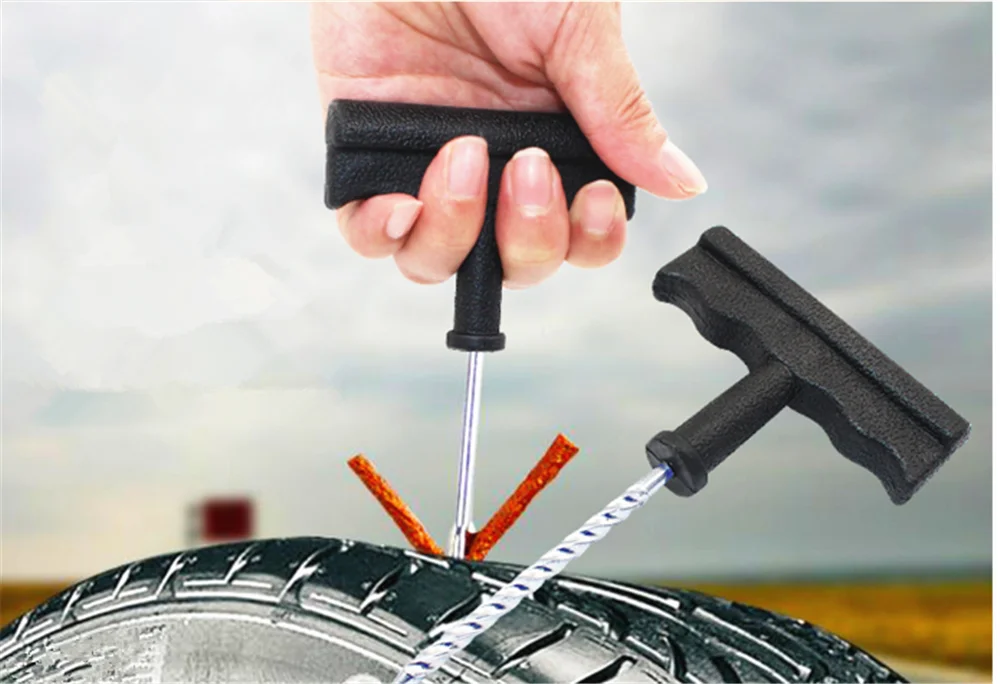 But in this case, not one wheel is balanced, but a pair standing on the same axle.
But in this case, not one wheel is balanced, but a pair standing on the same axle.
SHINSERVICE expert comment
Alexander Golubev
SHINSERVICE expert
Many drivers make the mistake of overhauling the suspension or replacing the power unit cushions when vibrations appear in the car. The first thing you should pay attention to is the cleanliness of the wheels and tires. Unevenly distributed adhering mud, snow, ice, tar stuck to the tire tread after driving on a road section being prepared for repair - all this can be the cause of imbalance.
The second important point is the mounting of the wheels. Each of them must be tightened to a torque in accordance with the recommendations of the automaker.
If everything is in order in this regard, then the wheel balance should be checked next. We advise you to do it only in proven specialized services, on certified equipment. And only if the measures taken have not yielded results, we recommend that you proceed to checking the setting of the front wheel angles and checking the condition of the suspension.
In any case, properly balanced wheels will avoid many problems in the future.
practice tires and wheels
Test drives / Test drive Haval Dargo vs Mitsubishi Outlander: the dog is barking, the stranger is coming In the Haval dealership in the south of Moscow, life is in full swing: buyers look at cars, communicate with managers and sign some papers. While I was waiting for the test Dargo, the same cross... 18197 7 205 09/13/2022
Test drives / Test drive Motor from Mercedes, emblem from Renault, assembly from Dacia: test drive of the European Logan 1.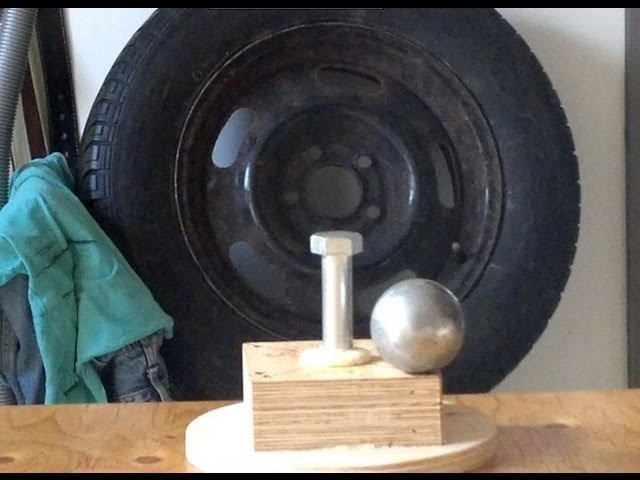 0 It would seem that what's new can be told about the second generation Renault Logan, known to every Russian taxi driver, as they say, up and down? However, this car has... 14601 ten 41 08/13/2022
0 It would seem that what's new can be told about the second generation Renault Logan, known to every Russian taxi driver, as they say, up and down? However, this car has... 14601 ten 41 08/13/2022
Test drives / Test drive Geely Coolray vs Haval Jolion: Free Cheese? If! Do you want to buy a car today with a full warranty, on credit at an adequate rate, without wild dealer markups? Now this is still a task, because a full-fledged chain of "representation - s... 11849 26 thirty 08/10/2022
home
Articles
Articles
Author : Alexander Sapronov
Vehicle manufacturers supply vehicles with properly balanced wheels.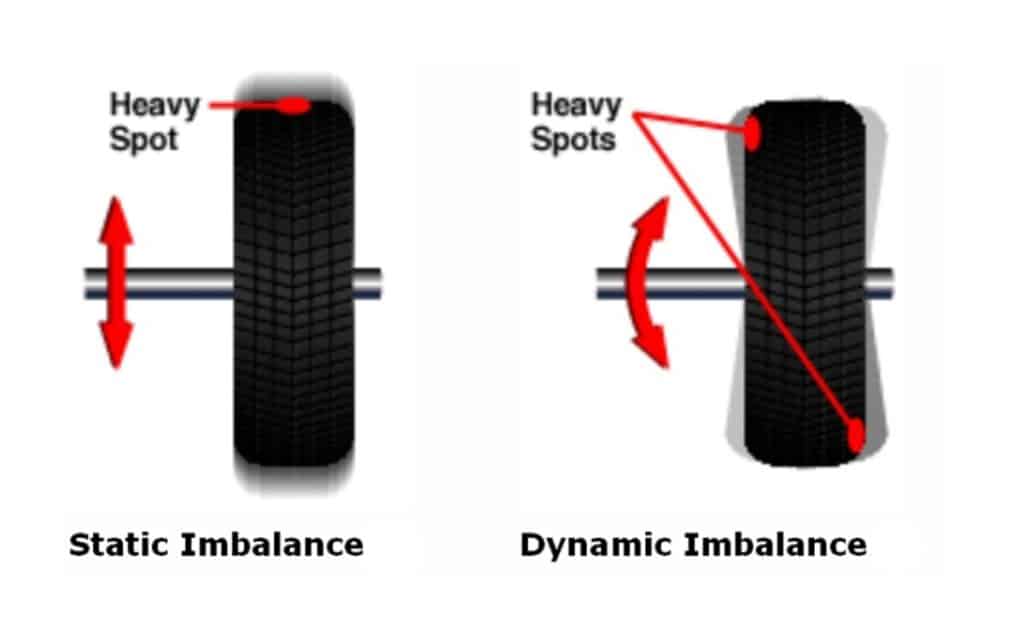 This allows you to ensure optimal handling, dynamics and safety of the car as a whole. The operation of the car from time to time leads to the fact that the balance of the wheels is disturbed. As a result, the steering wheel beats, road handling deteriorates, and significant wear of suspension parts occurs. Let's take a closer look at what balancing is, when it is needed and how to understand that the wheels are installed and balanced correctly.
This allows you to ensure optimal handling, dynamics and safety of the car as a whole. The operation of the car from time to time leads to the fact that the balance of the wheels is disturbed. As a result, the steering wheel beats, road handling deteriorates, and significant wear of suspension parts occurs. Let's take a closer look at what balancing is, when it is needed and how to understand that the wheels are installed and balanced correctly.
Contents:
Car wheel balancing is required:
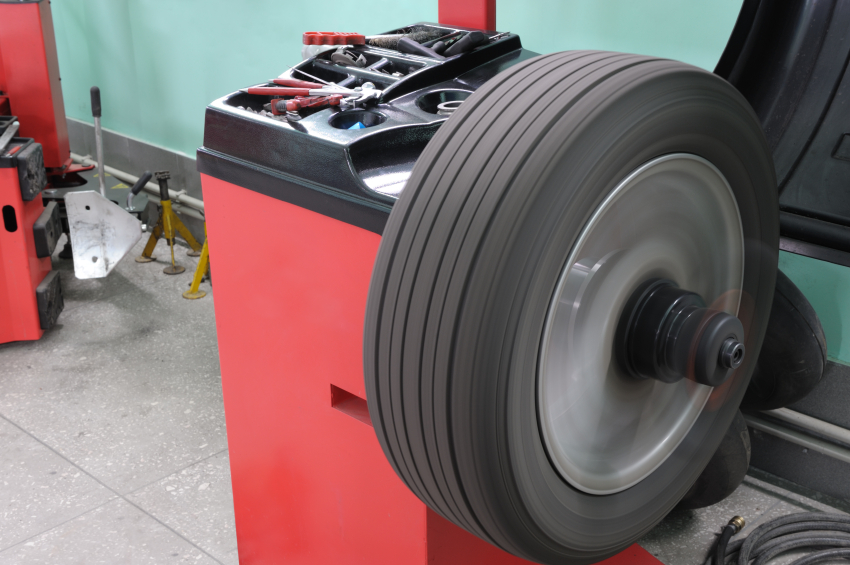
In the event of a “breakdown” of the suspension, wheel balancing may also be required. If you do not adjust the wheels in a timely manner, then there is a possibility of deterioration in the controllability of the car, which at high speed can lead to emergency situations. Therefore, it is strongly recommended to perform balancing in the above cases. Moreover, the process does not take much time. If the car owner does not have the opportunity to visit a tire fitting, then field wheel balancing in the city or region will help. The master himself will drive up to the client and use mobile equipment to check the wheels, perform all the necessary work on the spot.
There are two types of wheel imbalance:

Even after the static imbalance has been eliminated, a dynamic imbalance may remain. Therefore, it is important that the wheel balancing is carried out by the masters of a specialized car service using modern computer equipment for diagnosing car wheels.
When balancing, the wheel is removed from the car and installed on a balancing machine. After that, the wizard enters the parameters of a particular wheel into the computer. In accordance with the entered parameters and the characteristics of the installed wheel, after the tests, the computer provides information on exactly where on the disk and what weights need to be installed to eliminate the imbalance. The use of a 3D diagnostic stand in a car service allows you to accurately determine the imbalance, geometry violations, wheel beating.